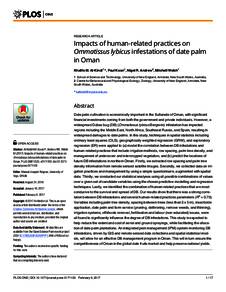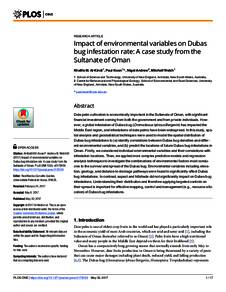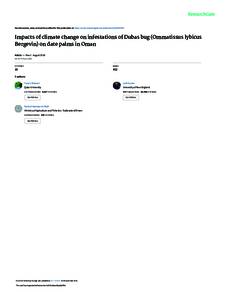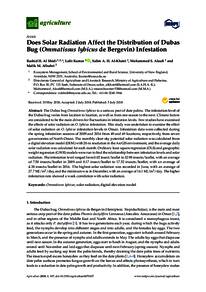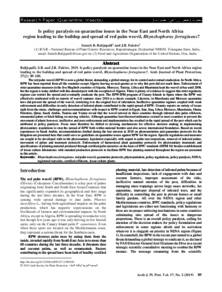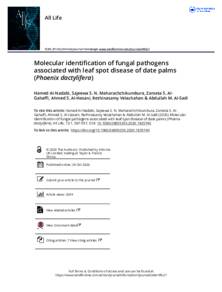Document
Relationship of date palm tree density to dubas bug ommatissus lybicus infestation in Omani orchards.
Identifier
DOI: 10.3390/agriculture8050064
Source
Agriculture (Switzerland). v. 8, 5, 64
Contributors
Kumar, Lalit., Author
Al-Khatri, Salim A. H. , Abridger
Al-Bahri, Malik M. , Author
Al-Aufi, Mohammed S., Abridger
Country
Switzerland
City
Basel
Publisher
MDPI AG.
Gregorian
2018-05-01
Language
English
English abstract
Date palm trees, Phoenix dactylifera, are the primary crop in Oman. Most date palm cultivation is under the traditional agricultural system. The plants are usually under dense planting, which makes them prone to pest infestation. The main pest attacking date palm crops in Oman is the Dubas bug Ommatissus lybicus. This study integrated modern technology, remote sensing and geographic information systems to determine the number of date palm trees in traditional agriculture locations to find the relationship between date palm tree density and O. lybicus infestation. A local maxima method for tree identification was used to determine the number of date palm trees from high spatial resolution satellite imagery captured by WorldView-3 satellite. Window scale sizes of 3, 5 and 7 m were tested and the results showed that the best window size for date palm trees number detection was 7 m, with an overall estimation accuracy 88.2%. Global regression ordinary least square (OLS) and local geographic weighted regression (GWR) were used to test the relationship between infestation intensity and tree density. The GWR model showed a good positive significant relationship between infestation and tree density in the spring season with R2 = 0.59 and medium positive significant relationship in the autumn season with R2 = 0.30. In contrast, the OLS model results showed a weak positive significant relationship in the spring season with R2 = 0.02, p 0.05 and insignificant relationship in the autumn season with R2 = 0.01, p > 0.05. The results indicated that there was a geographic effect on the infestation of O. lybicus, which had a greater impact on infestation severity, and that the impact of tree density was higher in the spring season than in autumn season.
ISSN
2077-0472
Category
Journal articles

